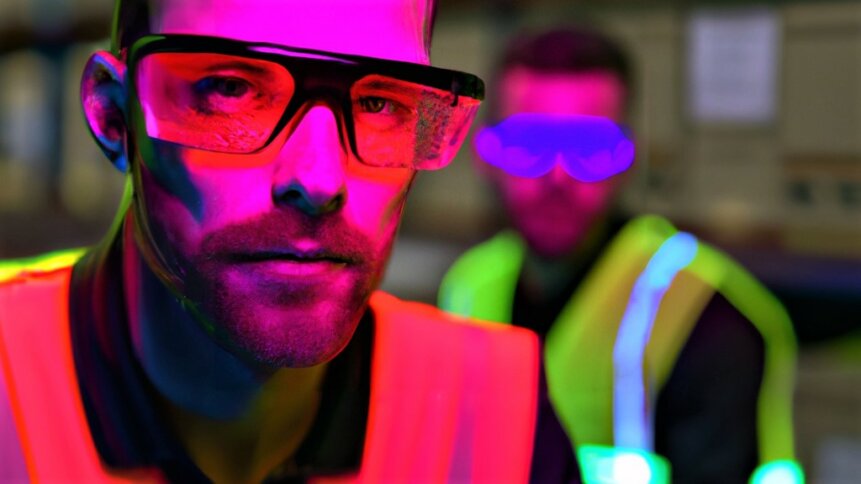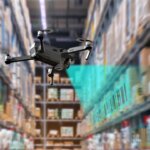Augmented reality in supply chain: e-commerce applications explained

|
Getting your Trinity Audio player ready...
|
Just because there are teething troubles in the metaverse and Facebook’s virtual reality (VR) designs have struggled to boost the social media giant’s profits, don’t discount the power of augmented reality (AR) to enrich business operations. AR in supply chain is booming. “From the plant floor to the field, augmented reality is making an impact when it comes to how factory personnel, service technicians, and engineers interact,” explains Ole Isaksen, VP of Strategic Alliances at business technology experts ENAVATE. “AR can provide deeper insights and greater control over what’s on the shelves, what’s moving and what’s not, and what customers are purchasing.”
Reasons for the success of AR in supply chain
Unlike VR, which aims to provide a wholesale shift in the perception of participants, AR overlays its contribution on top of the real world. Presenting information in this way makes it less jarring for humans to process, as visual cues remain. The processing burden is also reduced for devices. And AR can be enabled using smartphones and tablets, or smart glasses – if users are seeking hands-free operation. Ease of implementation is one of the big reasons for the success of AR in supply chain and related use cases.
Looking at examples in warehouse inventory management and e-commerce highlights that AR is well-matched to problems that need solving – for example, giving online shoppers an elegant way of picturing how new items will look in their homes. In this case, potential customers can simply download an app and use the camera that’s already built into their own phone. And because they are familiar with the hardware, the muscle memory is already there. The step from reality to augmented reality isn’t difficult, typically, for users to navigate.
Surveys suggest that product demonstrations and being able to try on items virtually represent one of the strongest growth areas for AR in e-commerce. Shopify highlights what it dubs “showroom” style AR by pointing to a ‘view in your room’ button placed underneath the picture of a sofa in an e-retailer’s mobile app. But the contribution of AR in supply chain doesn’t stop once the goods are ordered. At fulfillment centers, e-commerce staff can use AR solutions to find products and query item selections quickly.
3PL case study
DHL Supply Chain, a third-party logistics (3PL) provider, reportedly observed a 10% productivity improvement in stock picking using smart glasses compared with a regular handheld scanner. So-called visual picking allows staff to scan barcodes and view the information on a small display built into the head-worn unit. And developers of smart glasses in logistics include German firm Picavi. Hardware can be deployed in other ways, too – for example, TechHQ has reported how US company Blitzz enables support centers and inspection firms to augment their productivity using various devices from camera phones to smart glasses.
“AR can simplify the supply chain process by enabling interactive 3D visualization, fast object tracking, inventory accounting, and automation,” note Ajay Tiwari and Sumit Mehrish of Birlasoft, an international conglomerate that ‘helps manufacturers to expedite their industry 4.0 journey. Equipped with AR, staff can walk around the warehouse and (with the right software) effectively see through into boxes piled high on shelves. AR in supply chain enriches business operations and gives firms a much richer view of what’s happening on the warehouse floor.
Systems can be location-based – for example, giving operators relevant information using GPS positioning, showing data that changes as they move around the business premises. We’ve already mentioned mobiles, tablets, and smart glasses, but other wearables can be included on the AR device list too, such as smart watches, which are increasingly popular and capable.
AR enriches the training experience
Looking at applications of AR in supply chain, it’s worth underlining opportunities in training and maintenance. We touched on the use of smart glasses to assist field support teams earlier, and AR is extremely useful for highlighting which product parts need to be removed as part of a repair. Also, with a video feed, experienced staff can share their expertise with engineers in the field remotely, saving on the number of van rolls, but retaining the expert eyes of senior team members.
The ability of AR to enrich the training experience crosses over into e-commerce. For example, once products have shipped from the warehouse and been received by customers, suppliers could direct the client to relevant manuals. Today, that’s often enabled through downloadable PDFs that guide users through safe operation of products, page by page, and advise on the steps to take when devices don’t do what customers want them to. But AR could add so much more to the experience.
Enabling users to fix their own devices could dramatically reduce the number of calls to customer service centres, justifying the additional cost of developing interactive AR apps. Right-to-repair legislation is on the rise, so this could be another e-commerce application trend for AR systems. Done well, interactive training and repair manuals could potentially be a key differentiator for product makers, putting them ahead of the competition and lifting sales.









